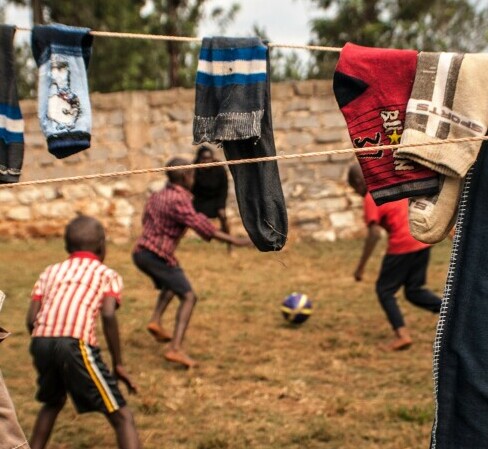
Advanced passing isn’t just about kicking the ball around. We’re talking about precision, speed, and the ability to outthink your opponent. Competitive soccer is a chess game where the right move at the right time can make all the difference. In this section, you’ll understand why advanced passing is crucial and what it brings to the table for you and your team.
The objective of these drills isn’t only to make you faster or more accurate. It’s about enhancing your vision on the field, understanding your teammates’ movements, and creating opportunities where there seem to be none. You’ll find that these drills can transform how you play and how your team connects on the pitch.
You might’ve heard it a million times—practice makes perfect. But not just any practice. Deliberate, focused practice aimed at honing your passes can elevate your game. These drills push you beyond your comfort zone, improving both your individual skills and your team’s overall dynamics.
Think about the last game you played. How often did you feel rushed or pressured when making passes? Advanced passing drills prepare you for exactly those moments, making you comfortable in uncomfortable situations. And let’s be real, that’s where games are won or lost.
Dynamic Passing Patterns
Let’s get into the core skills that’ll help you dominate the field—dynamic passing patterns. Speed and accuracy are non-negotiables at a competitive level, and one-touch passing drills are perfect for that. Imagine zipping the ball around without giving the opposition a chance to intercept. Practicing one-touch passing regularly can tighten your control and sharpen your responses.
Next up, triangular passing routines. Think of these as choreographed movements that help players get on the same wavelength. Setting up cones or markers in a triangle and passing the ball around them encourages spatial awareness and anticipates where teammates will be. This is all about creating fluid, intuitive movements.
Combination plays are another essential tool. These are sequences where players perform a series of passes to slice through the defense. For instance, short passes followed by a long through ball can catch defenders off guard. Practicing these patterns during training helps develop a natural rhythm and synergy among team members.
Dynamic passing drills are not just about footwork. They teach you to read the game better and synchronize with your teammates. Incorporating these into your practice sessions can lead to smoother, more effective game play. So, the next time you’re on the pitch, you’ll be ready to outmaneuver your opponents with ease.
Pressure Situations and Decision-Making
Dealing with pressure on the field can make or break a game. That’s why it’s vital to practice passing in high-pressure scenarios. Imagine you’re surrounded by opponents, and the clock is ticking. Can you still make that crucial pass? Drills that simulate game pressure prepare you to execute under stress.
Small-sided games are a fantastic way to create pressure situations. By reducing the number of players and space, you force quicker decision-making and faster ball movement. It’s about training your brain as much as your feet, helping you stay composed when the stakes are high.
Progressive overload techniques are another excellent strategy. Start with a moderate level of difficulty and gradually increase the intensity. This could mean reducing the time you have to make a pass or increasing the number of defenders. The goal? To handle escalating pressure without losing your cool.
Quick decision-making in these scenarios is key. You want to move the ball swiftly but effectively. Players often freeze or make poor choices when pressured, but consistent practice can turn these moments into second nature. Small tweaks, like changing the passing angles or speeds, can have a big impact.
By embedding these drills into your routine, you’ll not only enhance your skills but also build mental resilience. Handling pressure becomes a part of your muscle memory, so when game day arrives, you’re ready to perform at your peak.
Integrating Passing Drills into Team Strategy
Advanced passing drills fit into your overall team strategy like puzzle pieces. They’re not just about individual skill but how everyone collaborates on the field. Tailoring these drills to match your team’s tactics is where things get next-level.
First, align passing drills with your game plan. If your team focuses on quick transitions or maintaining possession, modify the drills to reflect that. This alignment ensures that what you practice has a direct impact on game performance.
Balancing technical skill development and strategic planning is crucial. Incorporate drills that challenge both the feet and mind. For instance, running drills that combine passing with specific game scenarios can help players understand when and where to make crucial passes.
Tracking progress is also key. Set benchmarks for improvement and review them regularly. Whether it’s the speed of passes, accuracy, or decision-making under pressure, having clear metrics can guide your training sessions, highlighting what needs more focus.
As players improve in these drills, it’s essential to keep integrating new elements to maintain engagement and push boundaries. Varying the conditions, adding new scenarios, and increasing complexity can keep the sessions challenging and beneficial.
So, by weaving advanced passing drills into your team’s fabric, you’re not just honing individual talent. You’re building a cohesive unit that’s ready for any challenge on the pitch. It’s all about creating synergy and readiness, prepping your team for peak performance.

You explained the drills in such a clear and practical way, I can see how these would really help take a team’s game to the next level. The emphasis on quick decision-making and precision passing is spot on for high-level play. I’m curious—do you think these drills are also suitable for younger teams trying to develop better passing habits? And which drill do you find players tend to struggle with the most at first? Great job with this!
Osea, your article on advanced passing drills for competitive soccer teams is a masterclass in transforming the way players approach the game. You’ve beautifully articulated how these drills go beyond mere technical proficiency to foster a deeper understanding of the game’s tactical nuances.
Given the importance of aligning advanced passing drills with a team’s overall strategy, how do you recommend tailoring these exercises for teams with diverse tactical focuses, such as those prioritizing quick transitions versus those emphasizing possession play?
All the Best,
Eric